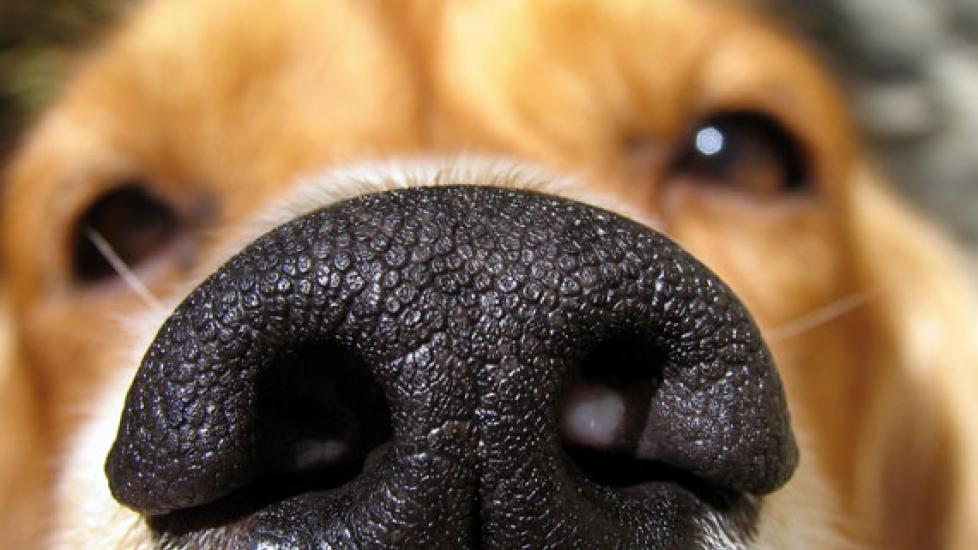Whose Scent Does Your Dog Like Most?
We all know scent is important for dogs. But smelling for dogs isn’t just about exploring their environment. Some odors give them a sense of pleasure, especially odors from you, their owners.
Fascinating new research suggests dogs can abstractly connect odors with pleasure. Dr. Gregory Berns, a neuroeconomist at Emory University explained the results of his study to Discovery News this way:
“It’s one thing when you come home and your dog sees you and jumps on you and licks you and knows that good things are about to happen. In our experiment, however, the scent donors were not physically present. That means the canine brain responses were being triggered by something distant in space and time.”
Recommended Pet Products
- Nutramax Proviable Probiotics & Prebiotics Digestive Health Supplement for Dogs & Cats, 160 count$89.98Chewy Price
- Fera Pets USDA Organic Pumpkin Plus Fiber Support for Dogs & Cats, 90 servings$34.95Chewy Price
- All Four Paws Comfy Cone E-Collar for Dogs & Cats, Black, Small$20.24Chewy Price
- Virbac Epi-Otic Advanced Ear Cleaner for Dogs & Cats, 4-fl oz bottle$12.34Chewy Price
So how did Dr. Berns and his associates confirm this observation?
Dr. Berns is renowned for his ability to train dogs to remain still while they receive an fMRI scan of their brain. No anesthesia, no drugs, just training. Anyone having had an MRI can testify to what an accomplishment this is. An fMRI scans differs from a traditional MRI. It scans changes in brain activity in real time rather than the static recording of the traditional MRI.
For this study they used twelve dogs, including Br. Berns’s own dog, Callie. The handlers of the dogs during fMRIs were the primary owners, in this case mostly the female heads of household. The handlers presented sterile samples with swabs from five different sources; a familiar person in the household but not the primary owner (in this case mostly husbands), an unfamiliar person, a canine housemate, an unfamiliar canine, and the individual dogs' own odor.
The swab samples from humans were obtained from the armpits after 24 hours without bathing or the use of deodorants. Needless to say many of the participants were not happy with this part of the experimental protocol. The swabs from dogs were taken from the area around their anus and genitals.
The procedure for presenting the swabs by the handlers is detailed here in the experiment “Material and methods” section. The brain activity was monitored and evaluated. The area of the brain that was monitored is called the caudate nucleus. In humans, activation of this area is associated with pleasure. The research group found that the caudate nucleus was only activated by the odor of a familiar human.
It appears, for these twelve dogs, the odor of a familiar human signaled a probable, pleasurable outcome. This helps explain why leaving an article of your clothing with your dog during your absence is comforting and may help with separation anxiety.
Really interesting in this study is that service or therapy trained dogs had the strongest positive response to human odors. These findings led Dr. Berns to respond:
“While we might expect that dogs should be highly tuned to the smell of other dogs, it seems that the ‘reward response’ is reserved for their humans. Whether this is based on food, play, innate genetic predisposition or something else remains an area for future investigation.”
This finding has led Dr. Berns to speculate on the use of fMRI for screening service and therapy dogs. Identifying dogs that are highly responsive to human odors may reflect animals that are more likely to succeed at the job. By using this information, groups that train these dogs could save substantially on training expenses; dogs not likely to graduate can be identified early. Presently, only 30-40 percent of dogs that complete service or therapy training graduate and are placed after training.

Dr. Ken Tudor
Image: Robin Williams / Shutterstock




